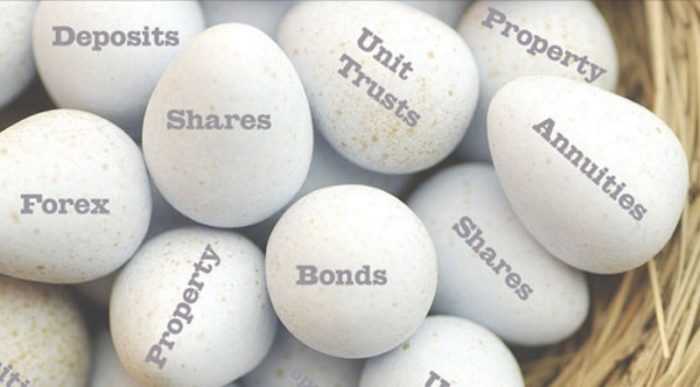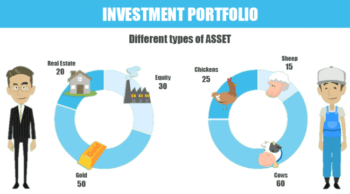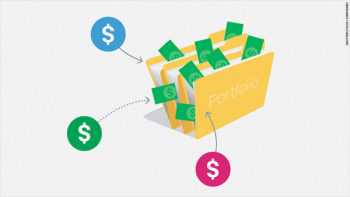
The barbell portfolio holds only short term and long term bonds and generates fixed income. A flattening yield curve situation is the best time to use this strategy, while a steepening curve is harmful to the strategy.
The barbell portfolio was invented by bond traders. The strategy means to hold safe short-term bonds and riskier long-term bonds. Put them together and that is the barbell portfolio. This also means that you are betting on both sides. But your barbell portfolio gives you protection since you have extremely safe short-term bonds. Yes, they will provide you with less profit but the profit is compensated from the other side of your portfolio – by long-term bonds that are extremely risky but provides a great profit.
Building a barbell portfolio, you will give your investments a balance that can run you through different circumstances, even extreme ones. The barbell portfolio is a very simple investment allocation actually. But the barbell portfolio is heavily weighted on two ends, just like a barbell. This concept is easy to understand and we want to explain it by using bonds. You can create this kind of portfolio with cash and stocks, also it can be a nice substitute to a 60/40 stock/bond portfolio.
How to structure barbell portfolio
Let’s say the short-term bonds are risk-free. But you will not earn a lot by holding only them. To have a profit you must add something riskier to your portfolio. So, you can do it by holding long-term bonds. You see we are not considering mid-term bonds. There are long-term bonds to provide the yield to your portfolio.
Yes, they are the riskiest but also give the highest returns.
The idea of this kind of portfolio is to bypass and avoid the risk on one side of the barbell portfolio and to do it as much as possible but to put more risks with long-term bonds.
For every investor, the risks diversification is one of the most important parts. So how to do that with a barbell portfolio? For example, you can build it if one half of your portfolio is in bonds with 5 years maturities and the rest is in bonds with 15 years maturities. The point is to put weight on both ends of your portfolio. But it hasn’t to be equal weight. it can be turned in one direction or another. Of course, it depends on an investor’s vision and yield demands.
You have to pay attention to the bond barbell strategy. It isn’t a passive strategy. You will need to monitor short-term bonds and adjust them frequently. Also, the other end with long-term bonds should be adjusted from time to time because of their maturities shorten. Some investors will just add new bonds to replace the existing.
Barbell Investing
It is all about aiming to balance risk in your investment portfolio. For example, if you put bonds on the left end of the barbell portfolio you might be faced with rising interest rates. So, the value of the bonds could decline. In order to balance the weight, you can replace them or part of them with, for example, with dividend-paying stocks, or some other ETFs. This left side has a great role. It has to protect your wealth so the savvy investor will always choose low-volatile and low-risk assets for the left end.
The right side’s role in your barbell is to give you high profits. That is your financial goal. So you can add some aggressive stocks there instead of long-term bonds.
The barbell strategy is actually a simple investment allocation. Two ends, two sides of your portfolio are designed like opposite ends. What you have to do is to allocate your capital between safe and aggressive sides. Some experts recommend holding 80% treasury bonds and 20% stocks.
Some may ask why to diversify like this. Here is why. Let’s say you have invested 100% in different stocks. Yes, you have a diversified portfolio but you are, at the same time, 100% exposed to downside risk and you are at risk to lose all your capital invested.
But if you build a barbell portfolio with 80% bonds and 20% stocks your downside risk can arise on your risky part of the portfolio. That is 20% of stocks. But the point is that the majority of your portfolio will be in safe investments. Moreover, bonds will give you interest too.
Why use this strategy?
Because it can lower risks for investors. At the same time, it can provide exposure to higher yield bonds. Higher yields will compensate for the higher interest risk rate. So that is the first benefit. This strategy allows investors to have access to higher yield long-term bonds. The other benefit is that this strategy reduces risks because the short-term and long-term bonds’ returns favor being negatively correlated. In other words, when short-term bonds are doing well, the long-term bonds will have difficulties. When you hold bonds with different maturities it is more likely to have less deadfall risk. Let’s say when interest rates grow, the short term bonds are rolled over and reinvested. Of course, at a higher interest rate. That will compensate for the drop in the value of longer-term bonds. Opposite, when interest rates are lower, the value of the longer-term bonds will grow. Simple as that.
But remember, it’s so important to manage the weight of both ends. And to do it actively. The contrary will never produce long-term returns. If you notice that the assets on one end of your barbell portfolio somehow look expensive you have to change it and balance by leaning toward less expensive assets on the other end. Well, if the prices are expensive on both ends, you will need to reduce overall portfolio risk.
Is there any risk?
Yes, interest rate risk no matter do you hold both long term and short term bonds. If you buy the long-term bonds while the interest rates are low they may lose value quickly when the interest rates increase.
An additional risk of the barbell strategy comes from the investors’ limitation, this portfolio doesn’t include intermediate-term bonds so you will not have exposure to them. And we all know that intermediate-term bonds give better returns than short-term bonds. Yes, they are riskier but not too much. In comparison with long-term bonds, intermediate-term bonds will offer a bit lower returns. That is the downside of the barbell portfolio because you don’t have an opportunity to earn on these returns.
Well, the main risk of the barbell strategy lies in the longer-term bonds. They are more volatile than their short-term bonds. As we said, you will lose if rates rise and you choose to sell them prior to their maturity date. If you keep the bonds until the maturity date, the fluctuations will not influence negatively.
The worst scenario for the barbell is when long-term bond yields are rising faster than the yields on short-term bonds. That is the steepening yield curve. The bonds that make up the long end of the barbell drop in value. So, you may be forced to reinvest the profits of the lower end into low-yielding bonds, to balance the portfolio.
But the flattening yield curve, if yields on shorter-term bonds rise faster than the yields on longer-term bonds you will earn. That is an advantageous part of the barbell strategy.
Bottom line
The benefits of the barbell investing strategy are numerous. Firstly, you will have a better diversification of your investments. Also, you will have more potential to reach higher yields with less risk. If interest rates are falling all you have to do is to reinvest at lower rates when the maturity date of that bond comes. In case the rates are rising, you will have the chance to reinvest the profits of the shorter-term securities at a higher rate. Since the short-term bonds mature frequently, that will provide you the liquidity and adaptability to solve emergencies.





